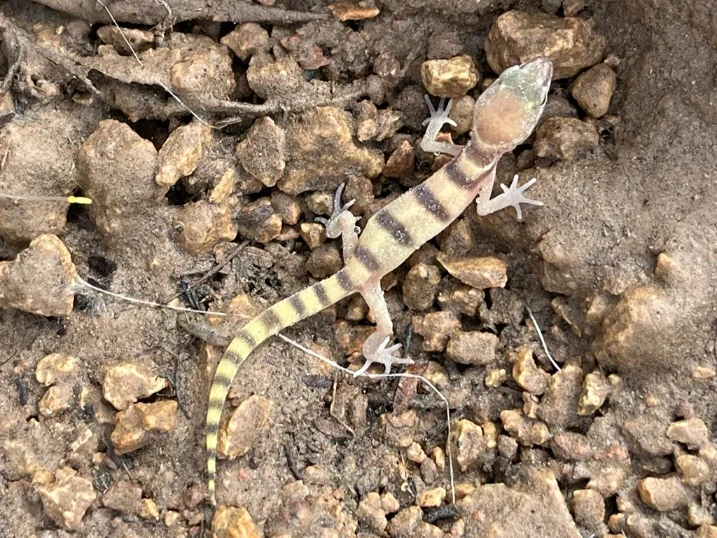If you’ve ever watched a gecko near a water dish or spotted one hiding behind a leaky pipe, you might wonder: what happens if it falls in? Can a tiny, agile gecko really drown?
Yes, geckos can drown if they stay underwater too long. They breathe with lungs, not gills, so if water covers their nostrils and mouth for more than a minute or two, they can’t get enough air. Some can swim short distances to escape, but they tire fast.
Why Geckos Can’t Breathe Underwater
Geckos live in humid places, but they aren’t built for swimming. Their lungs fill with air, just like ours, and their nostrils sit at the front of the snout.

If water gets into their lungs, oxygen can’t reach the blood, and they suffocate.
Unlike frogs or salamanders, geckos have scaly skin, not permeable skin, so they can’t breathe through it.
Once underwater, they depend completely on the small amount of air in their lungs.
How Long Does It Take for a Gecko to Drown?
It depends on size, temperature, and activity, but most geckos can hold their breath only one to two minutes.
Smaller geckos, like house geckos, have tiny lungs and less energy. They lose oxygen fast. Bigger geckos, like tokays, might last a bit longer, maybe three minutes if they stay still.
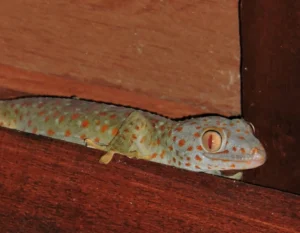
Struggling makes them use oxygen faster, so even a short dunk can be deadly if they can’t climb out.
How Geckos End Up in Water
In the wild, geckos rarely meet deep water. Around human homes or in captivity, accidents happen:
-
Falling into deep water dishes
-
Sliding into bathtubs or sinks with slippery sides
-
Falling into pools, buckets, or tanks without a way out
-
Getting washed into puddles during heavy rain
A shallow bowl might look safe, but if the sides are too steep, it can trap them.
What Happens When a Gecko Falls In
At first, geckos can float. Their small, light bodies give them some buoyancy. You might see one paddling with all four legs.
But their skin isn’t water-repellent like a duck’s. Once wet, it gets heavier. Their thick tails, full of stored fat, can drag them down.
After a minute or so, exhaustion sets in, the lungs fill with water, and drowning begins.
Can Geckos Swim?
Technically, yes, but only briefly. They can paddle with side-to-side tail movements and quick leg kicks. It’s more panic swimming than smooth motion.
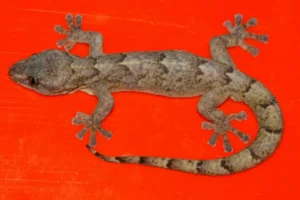
They have no webbed feet or streamlined body like aquatic reptiles. Every stroke uses energy.
In calm, shallow water, they might reach a wall or object to climb out. In deeper water, they usually can’t.
Why Some Geckos Survive Brief Dips
Sometimes geckos fall in shallow puddles or dishes and make it out alive. How?
-
Their reflexes are fast.
-
They cling to walls, sticks, or pebbles to escape.
-
Sticky toe pads still work when wet, though not as well as dry.
The danger comes when there’s nothing to grip. Smooth surfaces like glass, plastic, or ceramic trap them. Even a few inches of water can become fatal without an escape.
Signs a Gecko Has Inhaled Water
If a gecko has been rescued, watch for:
-
Weak or labored breathing
-
Limp or unresponsive body
-
Bubbling or wheezing sounds
-
Open mouth and tongue hanging out
-
Tail drooping
Sometimes the gecko is alive but in shock. Place it on a towel, keep it warm, and don’t flip it onto its back.
If breathing doesn’t normalize in a few minutes, it may need a vet.
Can a Gecko Be Rescued After Drowning?
If caught quickly, yes. Time is very short:
-
Remove it from water immediately.
-
Hold it gently, head slightly lower than the tail so water drains.
-
Dry its body with a clean cloth.
-
Keep it warm and quiet.
Some geckos revive in a minute or two, especially if water didn’t reach the lungs fully. If oxygen was cut off too long, damage is usually permanent.
How to Prevent Drowning in Captivity
Most accidents happen in captivity, but they’re preventable:
-
Use a shallow water dish with gentle sloping sides.
-
Add small rocks or pebbles for grip.
-
Avoid containers taller than the gecko.
-
Never leave bathtubs or sinks open nearby.
-
Cover or secure fish tanks and other water sources.
Simple rule: if a baby gecko could fall in and not climb out, it’s too deep.
Why Baby Geckos Are Most at Risk
Hatchlings are tiny, with small energy reserves. They tire fast and can’t hold their heads above water long.
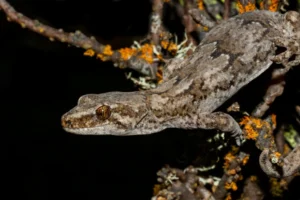
Even shallow puddles can be dangerous, so breeders use lids, shallow caps, or misting systems instead of open dishes for babies.
How Wild Geckos Avoid Drowning in Rainstorms
Heavy rain can flood burrows and wash small animals into puddles. Geckos climb upward, onto branches, rocks, or tree trunks. Their sticky toes help even on slick surfaces.
Tropical species hide in hollow plants or under bark. Desert geckos dig shallow burrows angled so water flows out.
Do All Gecko Species Handle Water the Same Way?
Not exactly. House geckos and day geckos near humid areas tolerate brief wet conditions.
Desert species, like leopard geckos, panic faster when submerged.
Arboreal geckos do slightly better, they see rain more often and have stronger climbing reflexes.
Can Geckos Float?
For a few seconds, yes. Air-filled lungs and light bones help at first. But once water seeps in, they start sinking.
Unlike snakes or turtles, they can’t stay buoyant long. If a gecko floats motionless, it’s likely exhausted or in danger.
The Difference Between Bathing and Drowning
Some pet owners bathe geckos to help with shedding. That’s safe, if done right.
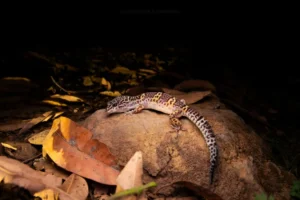
The key: control and depth. Bath water should be lukewarm, no deeper than the belly. The goal is skin moisture, not submersion.
Never leave a gecko unattended. Even a few seconds of slipping under can be dangerous.
Can Rainwater on Their Skin Suffocate Them?
No. Tiny drops can’t block nostrils. Heavy rain or high humidity can make breathing harder if the gecko hides in a sealed spot.
Ventilation matters, even in terrariums, air needs to flow.
Can Geckos Drown in Their Own Water Bowl?
Yes ,especially if it’s deep or smooth. Bowls should be shallower than the gecko’s shoulder height, with rough sides or pebbles.
Large deep bowls are convenient for us, but dangerous for them.
Do Geckos Ever Enter Water on Purpose?
Rarely. Some tropical day geckos briefly wade through shallow water chasing insects. They don’t stay long and exit quickly
. It shows adaptability, not comfort. Water is temporary, not their habitat.
Conclusion
Geckos can drown, but it’s not because they’re careless, they’re creatures of air and land, not water.
They breathe with lungs, move best on dry ground, and rely on quick reflexes.
A few inches of deep, smooth water can trap them, but shallow dishes, good enclosure setup, and awareness keep them safe.
Next time you see a gecko near a drop of water, remember: that tiny creature walks the edge between safety and danger, perfectly built to stay dry in a wet world.
Hi, my name is Ezra Mushala, i have been interested animals all my life. I am the main author and editor here at snakeinformer.com.

